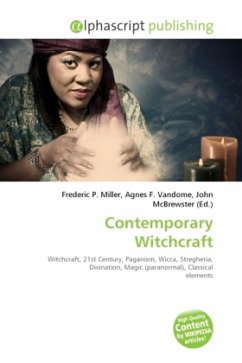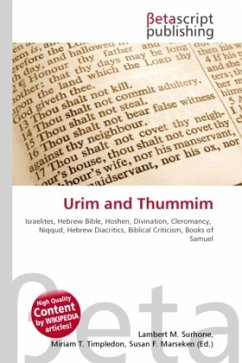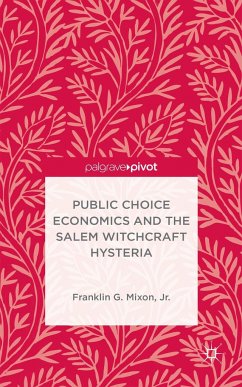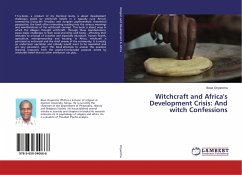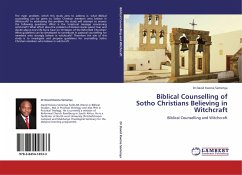
Witchcraft and Divination in the Bible
Versandkostenfrei!
Versandfertig in 6-10 Tagen
26,99 €
inkl. MwSt.

PAYBACK Punkte
13 °P sammeln!
High Quality Content by WIKIPEDIA articles! The exact difference between the three forbidden forms of necromancy is a matter of uncertainty; yidde'oni is usually only mentioned together with ba'al ob, and its semantic similarity to doresh el ha-metim raises the question of why all three are mentioned in the same verse of Deuteronomy. Classical Jewish sources argued that yidde'oni might be another form of ventriloquism, in which the voice is cast into at a bone which is placed into the ventriloquist's mouth. Rashi describes the doresh el ha-metim as a person who would sleep in cemeteries, after...
High Quality Content by WIKIPEDIA articles! The exact difference between the three forbidden forms of necromancy is a matter of uncertainty; yidde'oni is usually only mentioned together with ba'al ob, and its semantic similarity to doresh el ha-metim raises the question of why all three are mentioned in the same verse of Deuteronomy. Classical Jewish sources argued that yidde'oni might be another form of ventriloquism, in which the voice is cast into at a bone which is placed into the ventriloquist's mouth. Rashi describes the doresh el ha-metim as a person who would sleep in cemeteries, after having starved themselves, in order to become possessed. The Witch of Endor was a ba'al ob; the Septuagint again renders this as eggastrimuthos, thus describing her as a (necromantic) ventriloquist, although (one who has) familiar spirits is the more common English translation.



